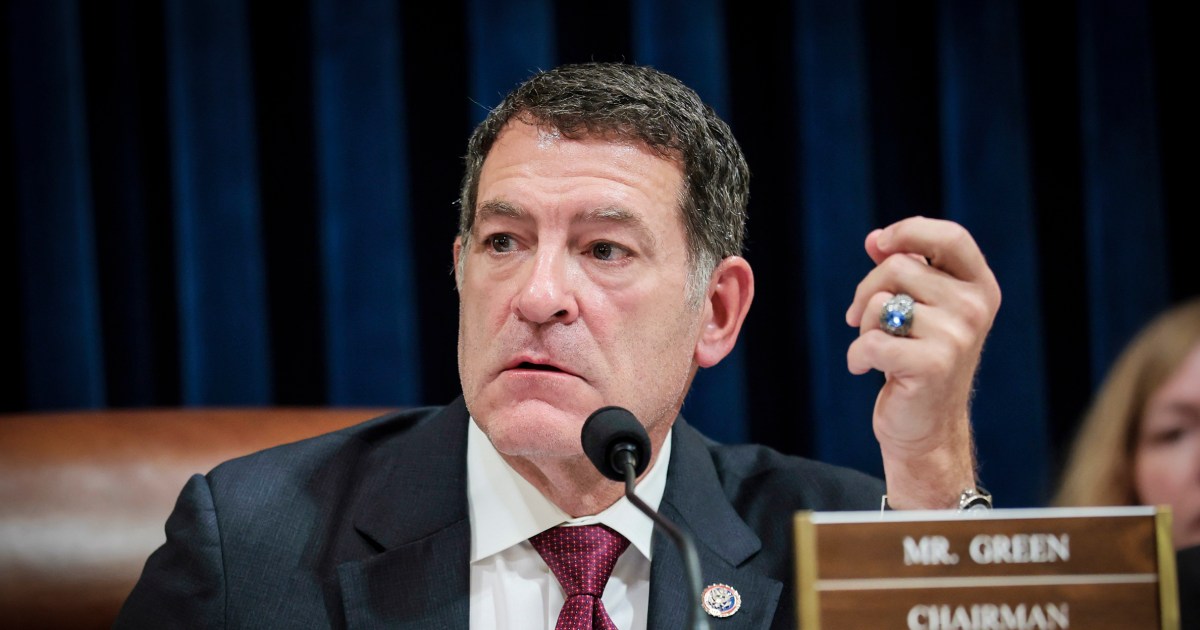Louisiana
A plan to build one of Louisiana’s biggest solar farms was rejected. Lawsuits have now been filed.

The rejection of a plan to build one of Louisiana’s largest solar farms in St. James Parish has drawn lawsuits from the developer and a land company that allege local officials acted in defiance of “objective evidence” and the public will in denying the 2,200-acre complex.
In two separate suits, the New York-based developer, D.E. Shaw Renewable Investments, and the Vacherie-based land company, Ten-R Company Inc., have asked state district judges in St. James to overturn the Parish Council’s decision last month to deny the 360-megawatt solar farm.
The dispute highlights the difficulty in building out large solar farms as energy companies seek to expand renewable power sources. The burning of coal or oil and gas for electricity is an important contributor to greenhouse gas emissions, which cause climate change.
SJ Louisiana Solar LLC project would have been built in the Vacherie area on sugar cane land along La. 20 and River Road and sold power to Entergy Louisiana. Entergy officials have said they wanted the solar power to meet demand from its industrial customers, but the large facility sparked local and official opposition.
That opposition stemmed from fears about noise and fires as well as worries about aesthetics and the loss of sugar cane land along the Mississippi River. Some also noted the site has industrial development potential and that the solar facility had promised few permanent jobs.
After more than two years of review and revision — including a moratorium to allow the council to develop a solar ordinance — DESRI came back with a scaled-down version of its earlier plans that was designed under the new parish solar ordinance.
Those provisions included sizeable setbacks that cut into the space for solar panels, as well as perimeter fencing and vegetative screens behind roads and homes to block the view of the panels, the suit claims. The company also alleged concerns about noise were mitigated and fears over fires and land contamination were overstated or false.
But, on June 18, in a 4-3 vote after more than two and a half hours of public discussion and council debate, the Parish Council denied the revised plan, which still would have been one of the largest solar farms in the state.
In the two suits brought Wednesday in Convent, SJ Louisiana Solar, which is a subsidiary of DESRI, and Ten-R allege the Parish Council acted arbitrarily and capriciously when it backed the Planning Commission’s recommendation to deny the project.
“The council’s denial of petitioner’s application constitutes an irrational abuse of power,” the DESRI subsidiary’s lawsuit alleges.
Victor J. Franckiewicz Jr., a parish planning attorney, said the lawsuits were not unexpected.
“We’re going to have to look at it in detail. I’m sure the parish will respond,” he said on Friday.
Council members who voted against the solar complex last month said they were responding to the public will, but the DESRI subsidiary argued that, in the council meeting and in an earlier planning commission meeting, public sentiment was decidedly in its favor, including from a host of letters, some unsigned or with illegible names, read out-loud by council officials.
In the suit, the DESRI subsidiary also argued the parish went against the Planning Commission and council’s own reasoning five years ago when they approved a far smaller DESRI solar facility, now built in the parish, without buffer lands because of its “benign nature” and “inconsequential impacts.”
The DESRI subsidiary also noted in its suit that the Louisiana Public Service Commission, in 2021, had found that the earlier version of its proposed complex, which then called for 300-megawatts of electricity, served the public interest and that the solar farm promised $141.3 million in tax revenue over its lifetime.
The company also detailed what it says were its efforts to tailor its plans to address public concerns and its decision to pass on lucrative property tax exemptions. It suggested that the complex would have no air emissions and less impact than currently allowed agricultural and residential uses.
“The council’s decision is not supported by any objective evidence in the record,” SJ Louisiana Solar, the DESRI subsidiary, alleges.
The subsidiary and the landowner, however, were seeking a project on land not designated for solar farms but for agriculture and future homes. The company and landowner, as parish officials have noted, needed an exception to those designated land uses to allow the solar farm.
Franckiewicz, the parish lawyer, has said previously that means the decision remained in the discretion of the Parish Council and was not a use by right.
In the court papers, the DESRI subsidiary pointed out, however, that no parish land use designation allows solar farms and that the council did not follow its solar ordinance consultant’s recommendation to make solar farms permitted activities in industrial and agricultural land uses.
In the DESRI subsidiary’s and the landowner’s suits, they allege some council members who voted on the project had possible conflicts of interest; DESRI also added some on the planning commission had conflicts too.
The suits don’t name the officials nor the source of the alleged conflicts.
The suit brought by SJ Louisiana Solar, the DESRI subsidiary, has been assigned to 23rd Judicial District Judge Keyojuan Gant-Turner. The suit from Ten-R has been assigned to Chief District Judge Jason Verdigets.

Louisiana
Baton Rouge's Sullivan Theatre brings “Oklahoma!” to Louisiana – Reveille

Cowboys, farmers and wide, beautiful fields of grass and cattle. With there being so much to love about Oklahoma, how does one choose their future?
Starting on June 13, The Sullivan Theater will be performing the Rodgers and Hammerstein classic, “Oklahoma!”
The story follows Laurey Williams and Curly McLain and their community full of a loving and rowdy cast of characters. Taking place in the early 20th century, “Oklahoma!” gives a glance into rural life in the territory before it became an American state. Full of lovers’ quarrels, dancing and a little bit of horseplay, the show is the perfect way to spend the summer.
“Oklahoma!” was Rodgers and Hammerstein’s first collaboration, not only setting the stage for their body of work but influencing musical history.
Recent LSU graduate Callie Ancelet plays Williams in the show. She found out about it while performing in “Xanadu,” Theatre Baton Rouge’s last show.
Ancelet said a lot of her experience with golden age musicals came from LSU. In 2023, LSU Opera produced “Carousel,” another Rodgers and Hammerstein musical, which Ancelet took inspiration from.
Ancelet, who now works as a music teacher, talked about how she prepared for the “Oklahoma!” auditions while already being in “Xanadu.”
“I would go to work from 8 to 4, then drive straight to the School of Music and practice my audition songs from like 4:30 to 5. Then I would go straight to Theatre Baton Rouge for a dress rehearsal or to perform in Xanadu.”
For those who may not be acquainted with “Oklahoma!”, Ancelet detailed what the show is about.
“It very much centers on love, and the simplicity of how things just always work out in the end,” Ancelet said.
Ancelet went on to explain why “Oklahoma!” is seen as an important point in musical history.
“When ‘Oklahoma!’ came out, that’s when we started straying away from super classical opera and really getting into musical theater,” Ancelet said. “That different style of singing and composing musical theater.”
The conversation shifted to talking about Ancelet’s character Laurey, and the influences on her portrayal as a character.
For Ancelet, Laurey is “on this pendulum of swinging back and forth between having to face reality” while also being a “dreamer” who “dreams with her whole heart.”
“I love when we finish off the show, and she’s just this wholehearted, well-rounded young woman, and I really loved doing a deep dive on her character,” Ancelet said.
To prepare for her role, Ancelet started by watching as many versions of Laurey as she could, and reading the script repeatedly.
During her time researching, Ancelet also took inspiration from other musical women, like Jenna from “Waitress,” Julie from “Carousel” and Elizabeth Swan from “Pirates of the Caribbean.”
She also studied Tiana and Naveen’s relationship from “Princess and the Frog,” hoping to use that in portraying her character’s relationship with Curly.
Ancelet said she particularly enjoyed working with her fellow cast members, many past castmates and Baton Rouge theater veterans. She called them excellent collaborators that she has a lot of respect for.
“When the cast list came out, and I saw all these hard hitters in our musical theater community, all these people that are so talented and I have much respect for, I was so excited,” Ancelet said.
For anyone thinking about seeing “Oklahoma!”, she has a message.
“Just sit back, relax, I’m really excited for us to immerse you in our little romantic cowboy western world,” Ancelet said.
In “Oklahoma!”, Thomas Jackson plays Curly McLain, a bright eyed, hardworking, All-American cowboy.
Jackson most recently performed in Theatre Baton Rouge’s “Waitress” and “Xanadu” with Ancelet. He has also previously worked with the Sullivan, playing Kodaly in “She Loves Me.”
In playing McLain, Jackson wanted to make sure he was “a product of his circumstances” and “super honest to the times and who he would be.”
Jackson also brought up the main conflict for Curly. Like many of the young characters in the show, he’s at the point where they have to define who they are as a person and what they want with the future, as Oklahoma as a territory is also defining itself as a part of the United States.
“I’m approaching him as somebody that knows how to take care of themselves,” Jackson said. “And because of growing up on this land, he knows how to take care of others in turn… a lot of living in this time is a marriage of survival and thriving and trying to romanticize your life to where it feels enjoyable.”
The conversation shifted to talking about the cast, specifically Jackson’s co-star Ancelet. As he was talking, Jackson told a backstage story from “Xanadu.”
“I remember we were getting ready to audition, and me and Callie sat with each other,” Jackson said. “We held each other’s hands and we said, ‘Can you imagine? What if.’”
When talking about each of their favorite parts of the show, both Ancelet and Jackson said the song “Surrey with the Fringe on the Top” was their favorite.
“It’s so precious,” Ancelet said. “We see two sides of Curly’s and Laurey’s relationship where it’s so cat and mouse. Then we center back towards the end of the song where there’s such a realness and authenticity to their relationship.”
Mentioning the Sullivan cast, Jackson called them hilarious..
“It is a group of comedians, through and through,” Jackson said.
Jackson began to talk about the theme of community throughout the show.
“I think it’s an important show to recognize right now and to remind people of their humanity,” Jackson said. “In this show we see different examples of what it’s like to be in a community.”
He talked about the character Jud who longs for community, and Curly and Laurey who “take strides into not just being part of community, but having a life of their own.”
Tickets for “Oklahoma!” are available on the Sullivan Theater’s website. Tickets are $25 for students and $35 for adults. The show opens June 13 and closes June 29.
Louisiana
A Louisiana charter school for dyslexic students plans to expand. See where, when

As many as one in every five Americans has dyslexia.
Yet as of 2023, only about 1% of the nearly 700,000 students in Louisiana public schools have been identified as having dyslexia.
For dyslexic children who go untreated, gaps in reading and writing abilities can begin as early as first grade, with potential consequences over time including lower high school graduation rates or college enrollment numbers, and higher chances of unemployment or incarceration.
That’s why Louisiana Key Academy, a nonprofit charter school, has sought to bridge the gap for dyslexic students by providing testing and specialized education programs at no cost to parents. Since its launch in Baton Rouge in 2013, the school has assisted hundreds of students and expanded to additional locations across the state.
The Louisiana Key Academy plans to open its fifth and newest location in Jefferson Parish, the largest public school system in the state, for the 2027-2028 school year. The Louisiana State Board of Elementary and Secondary Education will vote to approve the new location in August.
“I think every parish in the state needs a Louisiana Key Academy,” said former state Rep. Joe Marino, no party-Gretna.
Fourth grade teacher Olivia LeDuff helps student Aaliyah Williams read a short story on a tablet during a Structured Language Arts lesson at Louisiana Key Academy in Baton Rouge on Wednesday, May 21, 2025.
Dyslexia is a learning disability that affects a person’s phonological processing, or ability to speak, read and spell. Dyslexia has no visible symptoms, and affects people for their entire lives.
Those with dyslexia require specialized education to meet their needs, including at least 90 minutes per day of reading instruction. Clinical diagnoses require comprehensive evaluation, including both tests and interviews.
‘What’s wrong with me?’
Dr. Laura Cassidy, wife to U.S. Senator Bill Cassidy, R-Louisiana, co-founded the school with that in mind 12 years ago after watching her daughter, who is dyslexic, struggle at her private school.
“We’re spending a lot of money, but is this really going to get the kids where they need to get?” Cassidy recalled.
Cassidy said dyslexic children too often go undiagnosed or untreated, as costs and time constraints associated with the diagnosis, treatment and tutoring for the disability — as well as stigmas and lack of awareness — make it difficult for parents to access proper care, especially for those who are economically disadvantaged.

Student Kaiden Neal, center, smiles while reading aloud alongside Myles Netterville with the help of 2nd grade teacher Nicole Havard during a Structured Language Arts lesson at Louisiana Key Academy in Baton Rouge on Wednesday, May 21, 2025.
A recent study from Sally Shaywitz, co-director of the Yale Center for Creativity and Dyslexia, found that about half of children grades K-2 at two New Orleans public charter schools were at-risk of dyslexia, and that a disproportionate number of Black students have dyslexia that goes undiagnosed or untreated.
Cassidy said dyslexic children who fall behind in school because they are undiagnosed can suffer from confidence issues in the classroom, which over time can lead them to drop out as early as middle school.
“You can imagine, if you’re smart but you’re struggling in school, and your classmates are pacing ahead of you, you’re wondering, ‘What’s wrong with me?’” Cassidy said. “If you’re not identified as dyslexic, then parents or teachers or administrators can sometimes think (you) are lazy or not smart.”
Those beliefs oftentimes lead to stigmas associated with dyslexia, which causes many to conceal that they have it from others, Cassidy said.
Specialized education
At Louisiana Key Academy, students are provided with 90-minute reading instruction in small groups every day, with six students for every one teacher. Children are tested for free before enrollment, and several teachers undergo two-year training in language therapy to help students.
The school operates under guidance from Shaywitz and her husband, Dr. Bennett Shaywitz, the other co-director for The Yale Center.

Principal Lisa Card, right, chats with 4th grade teacher Olivia LeDuff and student Aaliyah Williams during a Structured Language Arts lesson at Louisiana Key Academy in Baton Rouge on Wednesday, May 21, 2025.
The Baton Rouge campus serves 440 students in grades first through ninth, and won approval in 2022 to add a 10th grade. The campus relocated to 5015 Auto Plex Drive last year to accommodate the change.
In recent years, Key Academy has opened additional locations in Shreveport and Covington, with a learning pod in Ruston opening in the 2025-2026 school year.
Few other schools in the region cater to dyslexic students, and even fewer provide that education tuition-free. Cassidy said parents commute from all over the state to enroll their children at Louisiana Key Academy, and some parents have even moved from out of state for the education.
“You’re just wondering, ‘Why can’t my child read? Why is my child so unhappy?’” Cassidy said. “It’s this enigma you’re not getting answers for, and then there is an answer. That’s why most parents end up bringing their kids to our school and, in the interview process, cry.”

Student Zara Williams puts her finger under the words of her book while reading aloud during a Structured Language Arts lesson at Louisiana Key Academy in Baton Rouge on Wednesday, May 21, 2025.
Statewide change
In addition to her work at the charter school, Cassidy has lobbied for changes to state education policy regarding the identification and reporting of dyslexia in public schools.
In 2022, Marino authored legislation to require that all teacher education programs include at least three credit hours pertaining to the education of dyslexic students. A year later, Cassidy worked with Marino to pass legislation requiring all kindergarten teachers to screen their students for dyslexia at the start of the second semester, a law that was expanded last year to include additional testing.
“Under the current school system, as long as they are able to continue to progress without failing, they don’t identify dyslexia,” Marino said. “You might have a students struggling to get a C or D, but they aren’t catching them as dyslexic because they haven’t failed a grade. Most of these kids aren’t being identified until they’ve already missed out on the most formative years of their education.”
Cassidy’s husband, chair of the U.S. Senate Health, Education, Labor and Pensions committee, has also made dyslexia a key issue on his platform and has sponsored multiple bills seeking to improve accessibility to screening and treatment nationwide.

Student Evie Kennedy looks at her teacher Olivia LeDuff over the top of her book during a Structured Language Arts lesson at Louisiana Key Academy in Baton Rouge on Wednesday, May 21, 2025.
Marino commended Dr. Laura Cassidy for her work in helping students with dyslexia across the state, and with educating him and other policymakers on the subject and its importance.
“She’s a force of nature when it comes to doing good,” Marino said. “I never doubt or underestimate that Dr. Cassidy is going to get something done because I’ve seen it over and over again.”
Louisiana
Here’s how to protect the Baton Rouge bat population, plus how they benefit Louisiana yards.

Bats are all around, but due to their nocturnal nature, Baton Rouge residents do not see them often. Misconceptions about the flying mammals abound, despite their significance to ecological systems.
Aaron Ashbrook, an assistant professor for the LSU Entomology department, specializes in urban entomology. He recently hosted a seminar series at LSU AgCenter’s LaHouse Research and Education Center for state sanitarians who expressed interest in the local bat population. Ashbrook’s lecture focused on correcting misinformation about pollinator support, mosquito management and bat conservation.
After the interest and success of the sanitarian lecture, Ashbrook and Christine Gambino, an extension associate for the entomology department, joined forces to plan a “Bats in Our Ecosystem Day” for the public.
Full lecture hall in the Howe-Russell auditorium to hear Teague O’Mara at the “Bats in Our Ecosystem Day.”
Ashbrook and Gambino planned a two-part event on May 24 that included a lecture on different bat species, their benefits and a demonstration on how to build a bat house.
Initially, the presentations were supposed to take place at LaHouse, but due to the large amount of interest and turnout, the event was moved to LSU’s Howe Russell Auditorium.
Gambino said that 405 people registered and 85 attended. She has noticed an increase in similar events that focus on gardens, pollinators and conservation efforts.
“We had people drive in from all over the state to attend,” she said. “We wanted to get the word out about bats, and we got lots of interest. People who couldn’t attend asked for the presentation to be recorded.”

From left: Teague O’Mara, Christine Gambino, Aaron Ashbrook and Mike Meyers after the bat conservation event.
Ashbrook and Gambino were pleasantly surprised at the registration and the turnout.
Teague O’Mara, director of conservation evidence at Bat Conservation International and adjunct professor of biological sciences at Southeastern Louisiana University, presented the lecture on bat diversity, Louisiana bat species, bat abilities, the benefits of bats for humans, threats to the bat population and solutions to protect bats.
O’Mara shared that there are 12 bat species present in Louisiana, all of which are insectivores and protected by law. Mexican free-tailed bats reside in the state year-round and primarily feed on moths, beetles, flies and ants.

Bat house that Mike Meyers, the Boy Scout Master who demonstrated building a bat house at the bat conservation event.
Beneficially, bats consume agricultural pests and insects, which positively affects farming economies. They also disperse seeds and pollinate commercially and ecologically valuable plants like agave, which flowers at night.
O’Mara included threats to bat populations, which include white-nose syndrome, wind turbines, land use change like deforestation and human diseases. The more natural separation between bats and humans provides a buffer, which means the less chance of viral spillover between the two species.
There are multiple ways Louisianans can help protect the local bat population, including building and setting up a bat house — which Mike Meyers, a Boy Scout Master in Metairie, demonstrated at the “Bats in Our Ecosystem Day.”

Mike Meyers, Boy Scout Master, demonstrates building a bat house at the bat conservation event.
The bat houses must be attached to a structure that could be inhabited by bats and need to be built with specific dimensions, distance from a house and height for the bats, to allow them to find the space comfortable and appealing to live in. Meyers even recommends a specific color, nutmeg, to paint the houses.
Other ways people can protect bats are planting bat-friendly pollinator gardens, using less pesticides and standing up for bat conservation.
For more information, visit batcon.org.
-

 Politics1 week ago
Politics1 week agoMichelle Obama facing backlash over claim about women's reproductive health
-

 Movie Reviews1 week ago
Movie Reviews1 week agoThe Verdict Movie Review: When manipulation meets its match
-

 West3 days ago
West3 days agoBattle over Space Command HQ location heats up as lawmakers press new Air Force secretary
-

 Finance1 week ago
Finance1 week agoHere's what will boost your feeling of financial well-being the most, researchers say
-

 Technology1 week ago
Technology1 week agoWhy do SpaceX rockets keep exploding?
-

 World1 week ago
World1 week agoTwo killed in Russian attacks on Ukraine before possible talks in Turkiye
-

 Kentucky1 week ago
Kentucky1 week agoHow Ole Miss baseball’s pitching options will factor in elimination game vs Western Kentucky
-

 World1 week ago
World1 week agoNcuti Gatwa Bids Doctor Who Farewell as Finale Ends With a Most Surprising Twist — Grade It!

















